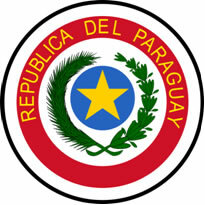Eastern Europe and the countries belonging to the CIS (Communities of Independent States) face several problems of social and economic order, in addition to the constant conflicts triggered by ethnic intolerance and territorial. The CIS is made up of a group of countries that made up the former Soviet Union.
The decline of the Soviet Union, together with the independence of the former Soviet republics, has resurrected several hotbeds of tension in the region of Eastern Europe and the CIS countries.
Main conflicts of CIS countries
In Moldova, in the central part of the country, there is a region called Transdnistria, in this area, a large portion of the inhabitants are people of Russian and Ukrainian origin, thus, since 1990, the aforementioned ethnic groups have sought territorial and political autonomy in order to no longer submit to the control of the Moldovan government, which is of origin Romanian.
With the fragmentation of Russian territory, South Ossetia was separated from North Ossetia. Thus, the first was established in Georgian territory, while the second is in Russian territory.
Since then, South Ossetia seeks to be annexed to Russian territory in order to unite with the rest of its ethnic group, present in North Ossetia, and, with that, compose a single autonomous republic. The Ossetians have long been fighting Georgian forces.
This conflict was revived on August 8, 2008, when Georgia invaded South Ossetia, and Russia, in turn, intervened and it carried out attacks on Georgian territory, invading it afterwards, consolidating a conflict that has left dozens of people dead and injured.
In southern Ukraine there is a province called Crimea, in this region there is a greater concentration of people of Russian origin, thus, aspires to annex this territorial portion to Russia.
In Azerbaijan there is a conflict that has dragged on for many years without reaching any solution. In southwestern Azerbaijan is the region of Nagorno-Karabakh, which is home to a large contingent formed by Armenians. The ethnic group in question announced its independence, an act that led to a major armed conflict that lasted for four years. The war involved Armenians and Azerbaijanis.
Do not stop now... There's more after the advertising ;)
By Eduardo de Freitas
Graduated in Geography
Brazil School Team
General geography - geography - Brazil School
Would you like to reference this text in a school or academic work? Look:
FREITAS, Eduardo de. "Conflicts in Eastern Europe"; Brazil School. Available in: https://brasilescola.uol.com.br/geografia/conflitos-no-leste-europeu.htm. Accessed on June 29, 2021.

